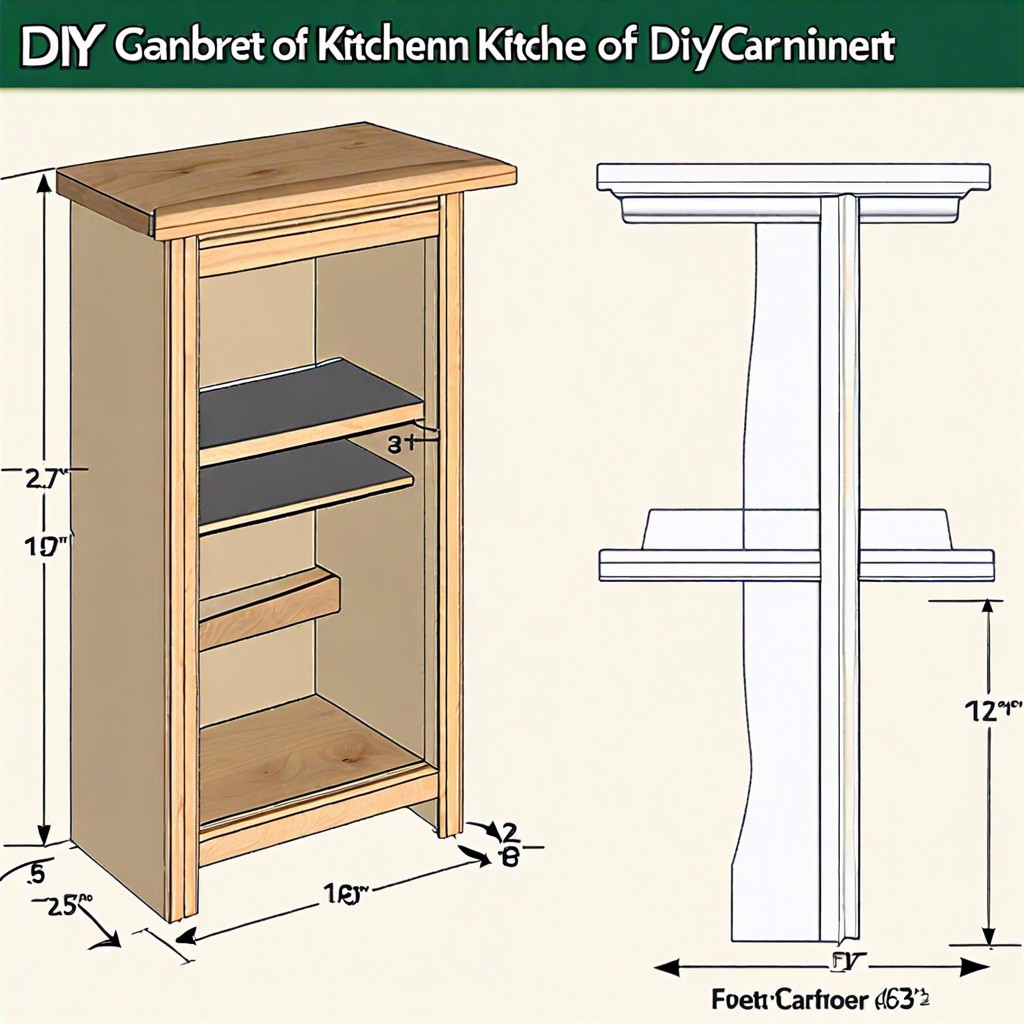Last updated on
Dive into the world of measurements as we demystify the real-world size of 14 millimeters in context of everyday objects.
Key takeaways:
- 14 mm is approximately the width of two standard pencils.
- It is about the same diameter as a standard USB Type-A plug.
- 14 mm is roughly the thickness of a smartphone charging cable.
- Converting 14 mm to inches yields approximately 0.551 inches.
- 14 mm is equivalent to 1.4 centimeters.
What's Inside
Easy Approximations, Without a Calculator

Visualizing 14 millimeters can be straightforward when you relate it to everyday items. Consider the diameter of a standard pencil, which is typically around 7-8 mm. So, two pencils side by side would give you a close approximation of the 14 mm width. Alternatively, if you have a 5-cent euro coin at hand, its thickness is about 1.67 mm, which means stacking around eight to nine of these coins would get you in the ballpark of the measurement you’re picturing.
For those familiar with the imperial system, an inch is about 25.4 millimeters. So, a smidge over half an inch – picture the height of a stack of three dimes, which are each about 1.35 mm thick – will give you a visual estimate of 14 mm.
It’s also worth noting that standard SD cards are just about 2 mm thick, so stacking seven SD cards will provide a tangible idea of this size. These comparisons offer an intuitive grasp of 14 millimeters without requiring mathematical gymnastics or a ruler.
Comparison to Common Objects

Visualizing 14 millimeters can be easily accomplished by thinking about everyday items. Consider the standard USB Type-A plug; its width is roughly 14 mm. If you’re a pencil enthusiast, the diameter of a standard pencil is close, just a touch over at about 7-8 mm, so imagine two pencils side by side. For those who wear jewelry, the thickness of a typical smartphone charging cable is a good comparison, which is often in the ball park of 14 mm. Moving to the kitchen, the diameter of a pea is approximately 7-8 mm, therefore picturing two peas next to each other can give you a sense of the size.
These comparative insights provide a tangible sense of the dimension without the need for precise measuring tools and can help when estimating or visualizing sizes in a variety of practical situations.
Analogies With Coins
Grab a dime from your pocket change, and you’ve nearly nailed the 14mm size: at 17.91mm in diameter, it’s a touch larger, allowing you to visually subtract a sliver to estimate the dimension in question. Similarly, the thickness of a penny, slightly beefier at around 1.52mm, can be piled up to nine coins to approximate our target thickness with a minimal overestimate.
If you have access to international currency, the 1 Euro coin is approximately 14.2mm thick, providing an almost exact reference for a 14mm thickness.
These coin analogies aren’t just convenient; they encourage a practical understanding of size and scale, which can be especially useful when exact measurement tools aren’t at hand. Keep these comparisons in a mental toolbox – they’re accessible resources that bridge the gap between the abstract world of numbers and the tangible reality of everyday objects.
Calculator Conversions
Converting 14 millimeters to inches is a straightforward calculation. All you need to remember is that one inch is equivalent to 25.4 millimeters. Therefore, to convert millimeters to inches, simply divide the millimeter value by 25.4.
For 14 millimeters, the calculation would be:
14 mm ÷ 25.4 = 0.551 inches
This means that 14 mm is just over half an inch – about the height of a standard pencil’s diameter.
Alternatively, if you want to convert millimeters to centimeters, recall that one centimeter consists of 10 millimeters. Thus, dividing the millimeter number by 10 will give you the centimeter equivalent:
14 mm ÷ 10 = 1.4 cm
Here, 14 mm translates to 1.4 centimeters, which is roughly the width of a standard USB plug. These quick maths can be done on any standard calculator or even in your head with a bit of practice.
Millimeters to Inches
Understanding the conversion from millimeters to inches is straightforward once you grasp the basic formula: one inch equals 25.4 millimeters.
Therefore, to convert 14 mm to inches, simply divide 14 by 25.4, which yields approximately 0.551 inches.
To simplify, you can remember that 10 mm is nearly equivalent to just under 0.4 inches, so 14 mm would be just over half an inch.
For those who prefer a visual representation, imagine the thickness of a standard pencil, which is about 7-8 mm in diameter. Two pencils side by side would give you a rough visual estimate of 14 mm.
Lastly, if mental math isn’t your strong suit, keep a conversion chart handy or use a digital tool like a calculator or smartphone app to quickly do the math for you. Remember that precision matters, especially in fields like engineering, carpentry, or jewelry-making, so ensuring you have the correct inch measurement can be crucial to the task at hand.
Millimeters to Centimeters
Converting millimeters to centimeters is straightforward: There are 10 millimeters in a single centimeter. To transform the measurement, simply divide by 10. Therefore, a 14 mm object is 1.4 cm. This decimal system, part of the metric scale, ensures simple calculations without complex math.
Imagine a ruler marked in centimeters: each of those centimeters comprises 10 tiny divisions, the millimeters. A 14 mm object spans just over one of these centimeter spaces. This visual cue offers a tangible grasp of the object’s size.
If you encounter a 14 mm specification in a design or a blueprint, recognizing that it is just 1.4 cm immediately gives you a gauge to assess the space required or allowed. From art projects to engineering parts, this knowledge permits you to navigate dimensions with ease and precision.
Earring Thickness Comparison
When you’re browsing for earrings, you may encounter the term ‘gauge’ which refers to the thickness of the earring itself. Gauge sizes are counterintuitive; the smaller the number, the thicker the earring. A 14mm earring is quite thick, translating roughly to a 000 gauge.
For context, standard ear piercings are typically done with an 18-20 gauge needle, which is roughly 1mm thick.
So, if you’re considering stretching your ears, 14mm is a significant size and would require a gradual process of ear stretching over time. It’s a commitment not to be taken lightly, and should be approached with care to prevent injury or irreversible changes to earlobe piercing sites.
If you’re already at this size, you’ll find a diverse range of plug designs to personalize your look.
Understanding these measurements is crucial especially for new modifications to ensure compatibility and comfort. Remember, reaching a 14mm size is a journey that should be undertaken with patience and proper care.
14mm in Relation to Gauge Sizes
Navigating the world of jewelry, especially earrings, often requires an understanding of gauge sizes. These are used to denote the thickness of the piece, particularly for body jewelry like plugs and tunnels.
The gauge system is counterintuitive because the larger the number, the thinner the piece. For instance, a 14mm earring would correspond to approximately a 000 gauge, which is on the thicker end of the spectrum. This is a favorite size for those who enjoy more substantial ear jewelry or who are expanding their piercings.
It’s also a common size for certain types of body jewelry beyond ear piercings. At 14mm, the jewelry is substantial enough to be sturdy but not overly bulky, making it versatile across various styles and preferences. Understanding gauge sizes in relation to millimeters is crucial for a comfortable fit and to avoid the risk of stretching piercings unintentionally.
Resources
Navigating the digital world for millimeter conversions can be effortless with the right tools. First up, online conversion calculators are a godsend for quick and accurate conversions — simply type in “14mm to inches” and voilà, instant results. Bookmark your favorite calculator for future use.
Another indispensable resource is a printable millimeter conversion chart. Keep one handy in your workspace; it’s especially useful for visual learners. If you’re on the go, there are several mobile apps designed for instant measurements; these can be real lifesavers for shopping or hands-on projects. Moreover, interactive websites allow you to compare millimeters to objects in a virtual space, adding a layer of understanding that bridges the abstract with the real-world. Remember to check out educational videos as well; they offer step-by-step guides that can deepen your comprehension of how different sizes relate to each other in a tangible way.
Links to Online Millimeter Conversion Charts
Navigating the world of measurements can become a seamless experience with the right tools at your disposal. Online millimeter conversion charts provide an interactive way to understand 14 mm in the context of other units. Websites like Metric Conversions and RapidTables offer user-friendly interfaces where you can simply enter the millimeter value and instantly get the equivalent in inches, centimeters, or feet.
For visual learners, many of these online converters include diagrams and comparison charts. This not only aids in better understanding but also helps in visualizing the size in practical terms. If you’re working on a project that requires precise measurements, these resources are invaluable for ensuring accuracy.
Furthermore, for smartphone users, apps such as Converter+ and Measure can be downloaded, allowing you to have a measurement guide in your pocket, accessible at any time. They often feature additional tools like unit calculators and size estimators to help with more complex tasks.
These tools are especially handy for students, designers, engineers, and DIY enthusiasts who regularly toggle between measurement systems. With just a few clicks, online conversion charts make 14 mm as comprehensible as a monetary value in your daily budget.
FAQ
What is the size of 14mm?
The size of 14mm, when converted, equals to slightly under 9/16 inch.
Is 14mm bigger than 1 cm?
Indeed, 14mm is larger than 1cm.
How big does a millimeter look like?
A millimeter, equivalent to about 0.039 inches, is quite small and comparable to the length of a sharp pencil point or the tip of a sewing needle.
How does the size of 14mm compare to everyday objects?
A 14mm object is approximately the size of a AAA battery in length.
What is an image example of a 14mm size object?
An everyday item that represents a 14mm size object is a ladybug, as they typically measure around 14mm in length.
In jewelry, what type of stones or pearls are typically around 14mm in size?
In jewelry, pearls or beads, including turquoise and agate, are typically around 14mm in size.




